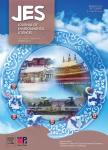Estimating source strengths of HCl and SO_2 emissions in the flue gas from waste incineration
Estimating source strengths of HCl and SO_2 emissions in the flue gas from waste incineration作者机构:State Key Laboratory of Pollution Control and Resource Reuse Tongji University Institute of Waste Treatment & Reclamation College of Environmental Science and Engineering Tongji University Shanghai Institute of Pollution Control and Ecological Security Centre for the Technology Research and Training on Household Waste in Small Towns & Rural Area Ministry of Housing and Urban-Rural Development
出 版 物:《Journal of Environmental Sciences》 (环境科学学报(英文版))
年 卷 期:2019年第31卷第1期
页 面:370-377页
核心收录:
学科分类:0830[工学-环境科学与工程(可授工学、理学、农学学位)] 08[工学]
基 金:supported by the National Natural Science Foundation of China (No.21577102) the Major Science and Technology Program for Water Pollution Control and Treatment (No.2017ZX07202005) the Fundamental Research Funds for the Central Universities (No.22120170050)
主 题:Municipal solid waste incineration Acid gas Hydrogen chloride Sulfur dioxide Source strength
摘 要:HCl and SO_2 emission is one of the major concerns related to municipal solid waste incinerator(MSWI). In this study, a material flow analysis model was developed to estimate the HCl and SO_2 concentrations in the MSWI flue gases(FGs), and their concentrations in the full-scale MSWI were monitored. The calculated concentrations of HCl and SO_2 in the FG were 770–1300 mg/Nm^3 and 150–640 mg/Nm^3, respectively, in close agreement with the monitored values. More than 99% of Cl and 92% of S from the FG were captured into solid residues by the air pollution control(APC) systems. Moreover, since only 48.4%–67.5% of Cl and 21.3%–53.4% of S were transferred to the FG from the municipal solid waste(MSW), it was more reliable to estimate the source strengths and release amounts of HCl and SO_2 in the FG based on the amounts of Cl and S in the APC residues(AR) and exhaust gas rather than in the MSW. This simple method is easily applicable and the estimated results could provide scientific basis for the appropriate design and operation of the APC systems as well as corrosion control of heat recovery systems.



